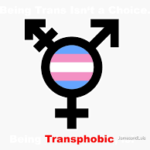Embarking on the journey of transitioning can be both exciting and daunting, especially for transgender women who wish to develop breasts as part of their physical transformation. Breast development is a complex process influenced by various factors, including hormone therapy, genetics, and personal health. Understanding these elements can empower individuals to navigate their unique paths with confidence and realism. In this article, we’ll explore the fundamentals of breast development for transgender women, dispelling myths, discussing surgical options, and celebrating the beauty of diverse bodies.
Understanding Transgender Woman Breast Development Basics
Breast development in transgender women typically begins with hormone replacement therapy (HRT), which involves taking estrogen and sometimes anti-androgens. Estrogen is a key hormone responsible for the development of breast tissue, encouraging changes similar to those experienced during puberty in cisgender women. The journey varies significantly among individuals, and factors such as age, body composition, and overall health can influence the rate and extent of breast growth.I Want To Be FemaleBest Over The Counter Hormone BalanceEstrogen Breast Growth Before And After
In addition to hormonal influences, it’s important to understand the biological processes behind breast development. During puberty, breast tissue is primarily formed from glandular and fatty tissues. For transgender women, the introduction of estrogen can stimulate the growth of these tissues. However, breast growth may take time — often spanning several months to years — and patience is essential as each person’s body responds differently.
How Hormone Therapy Influences Breast Growth
Hormone therapy plays a crucial role in breast development for transgender women, as it helps mimic the hormonal environment of cisgender women. Estrogen promotes the proliferation of breast tissue, whereas anti-androgens work to suppress testosterone levels. This combination can lead to noticeable changes in breast size and shape over time. Women often start to see changes as early as three months into therapy, with peak development typically occurring around two to three years.
It’s important to note that not all transgender women will experience the same degree of breast growth. Factors such as dosage, method of administration, and personal health can all affect outcomes. Regular consultations with healthcare providers can ensure that hormone levels are monitored, allowing for adjustments that can optimize breast development.
The Role of Genetics in Breast Development
Genetics is another significant factor influencing breast development in transgender women. Just as genetics play a role in determining breast size and shape in cisgender women, they also affect transgender women undergoing hormone therapy. Family history can provide clues about potential breast size, as well as how one’s body may respond to HRT.
Understanding genetic predispositions can help set realistic expectations for breast growth. While some may develop fuller breasts, others may have a more modest growth. It’s essential to embrace individual differences and remember that every body is unique; there’s no one-size-fits-all approach to breast development.
What to Expect from Your Breast Growth Journey
The breast growth journey can be a rollercoaster of emotions, and it’s essential to have realistic expectations. Initial changes may include tenderness, swelling, and sensitivity, as estrogen begins to work on breast tissue. Over time, the breasts may start to take shape, but the process can be uneven and vary significantly from person to person.
While some may experience rapid growth, others might find that their breasts develop more slowly. Additionally, breast shape and fullness may change as the transition progresses. Accepting that this journey can be nonlinear and filled with ups and downs is key to maintaining a positive outlook.
Common Myths About Transgender Breast Development
There are numerous myths surrounding transgender breast development, and it’s crucial to debunk these misconceptions for a clearer understanding. One common myth is that breast development is solely contingent on hormones; while HRT is vital, factors like genetics, body weight, and overall health also play significant roles.
Another prevalent myth is that all transgender women will achieve the same results from HRT. This misconception can lead to unnecessary disappointment and feelings of inadequacy. In reality, breast development is highly individualistic, and embracing one’s unique journey is essential for fostering self-acceptance and body positivity.
Surgical Options for Enhancing Breast Size
For many transgender women, hormone therapy may not provide the desired breast size or shape, leading some to consider surgical options. Breast augmentation surgery, also known as mammoplasty, is a popular choice for those seeking a more significant enhancement beyond what HRT can achieve. This procedure involves the insertion of breast implants, which can be customized to achieve the desired size and shape.
It’s important to consult with a qualified surgeon who has experience working with transgender clients, as they can offer insights and recommendations tailored to individual needs. Surgical enhancement can be a life-changing experience, but it’s crucial to weigh the pros and cons and ensure that it aligns with personal goals and expectations.
Caring for Your Breasts During Transition
As the body undergoes changes during HRT, caring for your breasts becomes increasingly important. Regular self-examinations can help you become familiar with your new shape and detect any changes or abnormalities early. It’s also a good idea to wear supportive bras, especially during the initial phases of growth, as they can provide comfort and help shape the breasts as they develop.
Hydration and proper skincare can also play a role in maintaining healthy breast tissue. Moisturizing the skin around the breasts can help improve elasticity and prevent discomfort during growth. Remember, nurturing your body during transition is crucial for your overall well-being and self-esteem.
Celebrating Your Unique Body: Stories and Tips
Every transgender woman’s journey is unique, and celebrating those differences can foster a sense of community and support. Many individuals find empowerment in sharing their stories, whether through social media, support groups, or personal blogs. Connecting with others who are on similar journeys can provide valuable insights, encouragement, and a sense of belonging.
Additionally, embracing body positivity and self-love is essential during this transformative phase. Learning to appreciate your evolving body can help you navigate the emotional aspects of transitioning. Remember, the journey of breast development is just one part of your overall story; each step and change is something to celebrate as you grow into your authentic self.
In conclusion, the journey of breast development for transgender women is a deeply personal and transformative experience that can be influenced by numerous factors, including hormone therapy, genetics, and individual health. Understanding the nuances of this process can empower individuals to embrace their unique paths. By dispelling myths, exploring surgical options, and celebrating diverse bodies, transgender women can navigate their journeys with confidence and pride. Remember, every body is beautiful, and the path to self-acceptance is worth every step.


